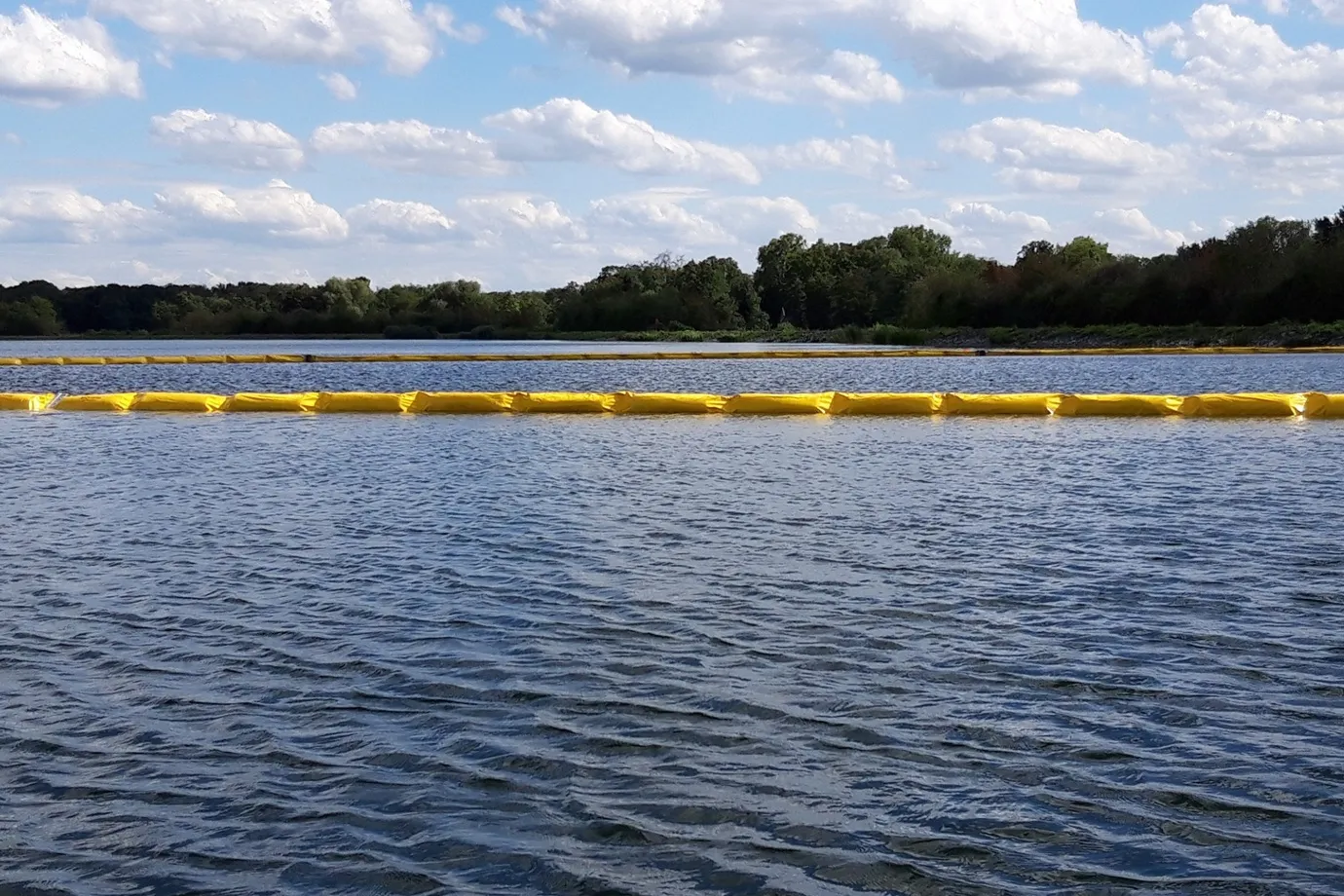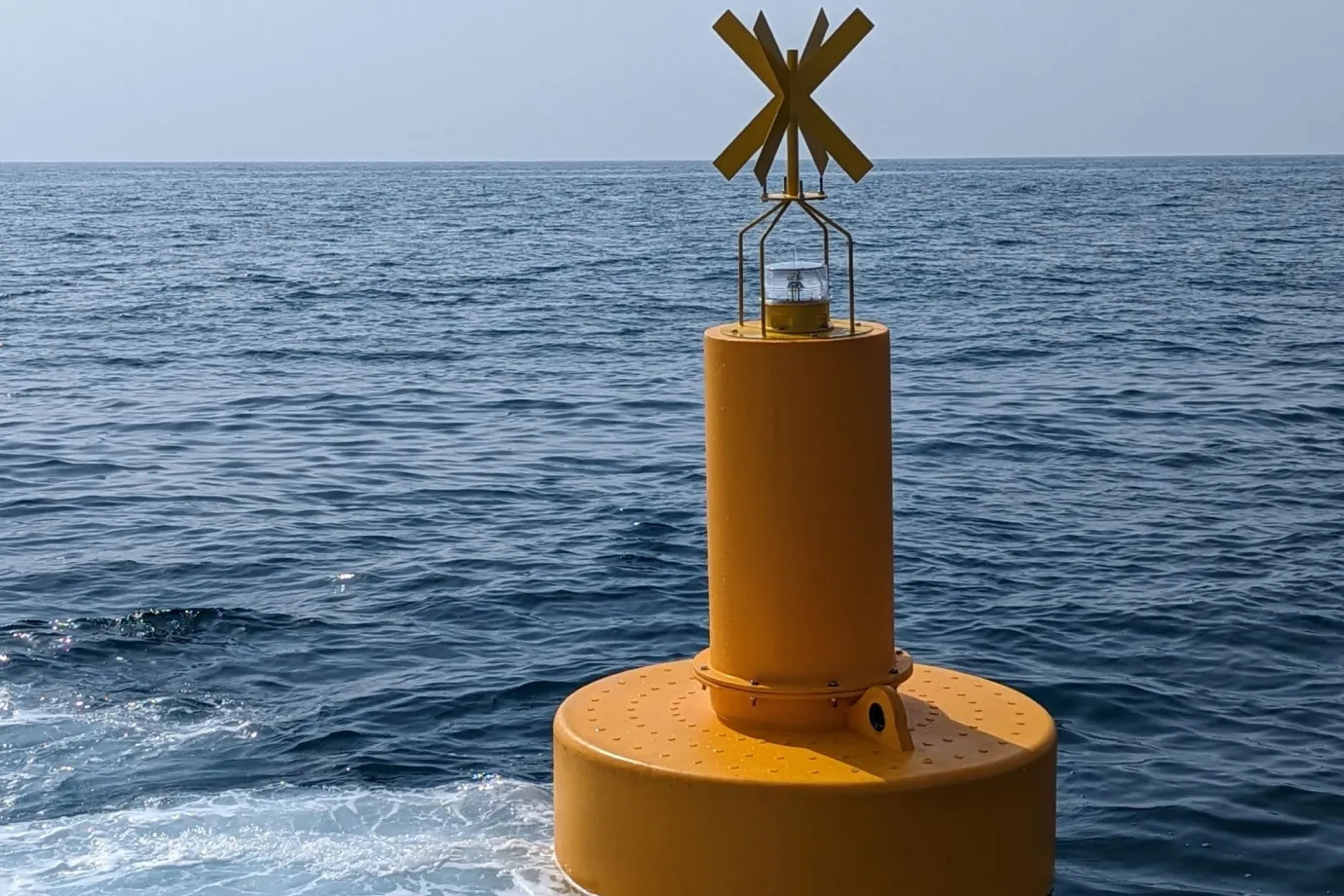Nowadays, environmental protection has become crucial worldwide, and governments are enacting new rules to address this issue more than ever. Oil and natural gas are the primary fuels for shipments and other activities and spilling them is one of the most destructive factors that can seriously endanger water, aquatic, water plants, and even people’s health. To prevent oil spills, people used to burn the oil on the water’s surface or clean it up with manual rough labor.
In 1851, when the oil beds of Lambton County in Canada West (Ontario) started to threaten North America’s ecosystem, the first oil booms emerged (Source). They were purposely invented to prevent oil from spilling around. By increasing shipments and human activities every day due to economic needs, oil booms have become an effective solution today. However, oil booms are designed in different types based on their application and use cases. In this blog post, we will delve into the available types of oil booms in the market and compare their mechanism and distinct points to understand how each type works and what its use cases are in more detail.
How Oil Booms Work?
To compare the different oil boom types, it is necessary to understand their basic mechanism. The primary role of oil booms is to prevent oil and gas from spilling and threatening marine life by polluting the water. They typically include a float anchored from both ends to keep the boom buoyant on the water and create a barrier to stop oil. Their floats can be designed with various materials, such as plastic, metal, or other materials, based on their mechanism. Moreover, the anchoring system and deployment method of oil booms differ based on their application and use case.
Oil Boom Classification: Two Main Oil Boom Types

After inventing the first generation of oil booms in the 1850s, these products have become a critical element in environmental protection, and requests for them have significantly increased. Nowadays, they are designed in various types to meet a wide range of requirements as well. Here are the most common types of oil booms in the market based on their mechanism and use cases, providing a comprehensive guide to oil boom classification:
Containment Oil Booms
Oil containment booms are typically used to contain the oil behind them and prevent it from spilling around in the water. The materials used in their floats should be watertight to be able to contain the spilled oil. Therefore, the floats of oil containment booms are mostly produced with plastic or metal. Their anchoring system and deployment method also vary based on their design and mechanism, which are provided in the following models:
See also: “How Oil containment booms work?”
Solid Floatation Oil Booms
Solid floatation oil booms are manufactured with solid foam-core floats that can be flat or cylindrical, covered by plastic (typically PVC) sheets to prevent foam leakage or oil penetration. By anchoring to the land from both ends, they create a floating barrier offshore or inshore, offering heavy-duty and durable oil containment, even in long-term applications.
Fence Oil Booms
Fence oil booms are floating barriers with a higher freeboard rather than solid floatation oil booms. They are designed with flat lightweight metal or plastic to be watertight, preventing oil and containing it successfully. The higher freeboard of the fence oil booms allows them to be used in marine areas (usually inshore or calm waters) for heavy-duty oil spills, where the height of the oil on the water is higher than normal.
Inflatable Oil Booms
Inflatable oil booms are sophisticated, automated types of oil containment booms designed to self-deploy in emergency situations. Their floats are typically designed with plastic (typically PVC sheets) filled with air and automatically deployed on the water via coil, compression, or spring systems. Inflatable oil booms are often used in inshore areas where emergency deployment is needed.
Curtain Booms
Curtain boom is an innovative solution designed with a combination of turbidity curtain (also known as silt curtain) and oil containment boom. It includes a float on the top to provide both buoyancy and oil spill prevention on the water surface, and a curtain underneath to prevent both the water’s subsurface heavy oils and sediments. The floats are typically covered by PVC sheet (like solid floatation oil booms), which is also used in curtain design to create a watertight barrier, preventing oil spills and controlling sediments.
Oil Absorbent Booms
Absorbent oil booms are the other types of oil booms that are significantly designed to absorb the oil, preventing it from spilling. Manufactured by specific materials (typically Polypropylene), they float on the water’s surface even if they absorb a large amount of oil. In addition, oil absorbent booms are designed to absorb only oil and hydrocarbons, not water or water-based liquids. In fact, they contain the oil inside themselves, completely opposite to oil containment booms that contain the oil on the water.
A Comparison of Oil Boom Types: Key Differentiators

We talked about the basic mechanisms of all oil boom types and then, we proceeded with mechanism of each type specifically. From design to deployment method, different types of oil booms offer different mechanisms that specify their applications and use cases. For instance, an oil boom with strengthened materials is suitable for heavy-duty oil spills, long-term applications, or high-current waters. So, here we compare different types of oil booms based on the primary factors:
Design Principle
Based on design, oil booms are provided in four categories:
The first category belongs to the cylindrical floats, anchored to the land or specific points from both ends. The second category includes flat floats, whether a flat sheet with half floats mounted on or just a flat sheet. This category is typically designed with higher freeboard to act as a fence. The third category refers to the air-filled floats, which are automatically inflated and deployed on the water rapidly, suitable for emergency cases. The fourth category is custom-designed oil booms, engineered and designed for specific situations or conditions. This category can also be a combination of two or more different types of oil booms (or other environmental, safety, and security booms) to meet the project’s requirements as well.
Materials
In oil containment booms, it is crucial to use materials that contain the oil successfully, without any leakage or penetration. On the other hand, they should be lightweight to stay buoyant on the water, even in high-current and windy conditions. So, these types of oil booms are designed with high resistance and watertight plastic (typically Polyvinyl Chloride or PVC) or lightweight metals. The oil absorbent booms, conversely, should include materials that absorb the oil and contain it inside themselves, ensuring no leakage and sinking caused by increasing weight. Most oil absorbent booms are produced by thermoplastic (typically Polypropylene or PP), designed to absorb hydrocarbons, including oil and gas, and do not absorb water-based liquids.
Deployment methods
Each design requires a unique deployment and installation method. Some of them are close to the shore and anchored to the land from both ends, creating a floating barrier to stop oil from spilling. Some of them are anchored to the mooring buoys used in the middle of the marine environment far away from the shore. Some of them are anchored to the land from one end and to the mooring buoy from another end. Some of them are engineered to be fast deployed, automatically deployed on the water in emergency situations. Therefore, the deployment method of different oil boom types widely depends on their design principles.
Primary Factors in Choosing the Right Oil Boom Type

Regarding the importance of using oil booms in preventing oil spills, it is crucial to choose the right types of oil booms that can meet the project’s requirements well. Here are the primary factors that should be considered during choosing oil booms to maximize their performance in the project:
Materials of Oil Boom
Materials of oil booms directly affect their performance and efficiency. Oil containment booms should be manufactured by watertight materials that ensure no leakage or penetration of oil. Oil absorbent booms, on the other hand, should be designed with materials that absorb oil and other hydrocarbons without letting it leak into the water or getting heavy and losing its buoyancy. Moreover, it is critical for both oil absorbent and containment booms to be lightweight. Therefore, the quality and type of material are one of the primary factors that should be considered when choosing the right oil boom types.
Water Conditions
Since oil booms are designed to be light and float on the water’s surface, currents can easily impact their performance. Some of them are designed for calm waters with minimum currents and wave range while some of them are still buoyant even in harsh weather conditions. In addition, different materials and anchoring systems can perform distinctly in various conditions.
Type of Oil
The type of oil that spills on the water could be different. Light oils typically stay on the water’s surface and require oil booms as floating barriers to contain them. However, heavy oil can sink slightly below the surface and require heavy-duty oil booms or a resistant watertight curtain underneath to prevent oil from spilling even slightly under the floats.
Deployment Duration
The type of oil that spills on the water could be different. Light oils typically stay on the water’s surface and require oil booms that contain them. However, heavy oils can sink slightly below the surface and require heavy-duty oil booms or ones that have a skirt (e.g., silt curtains) to prevent oil from escaping underneath.
Duration Deployment
In some cases, the time spent deploying an oil boom is crucial. The Inflatable oil booms are the best solutions designed to deploy rapidly in emergency situations like instant oil spills. But the other types of oil booms may require more time to install and deploy. So, it should be considered how long an oil boom will be deployed on the water.
Conclusion
Oil spills are one of the most destructive factors that include permanent consequences for the ecosystem. Since oil and natural gas are the main fuel sources for shipment and other marine activities, they cannot be removed. Therefore, oil booms are considered the most efficient solution to address this issue. In this article, we comprehensively discussed different types of oil booms and compared them based on the primary factors, such as materials, designs, and deployment methods. Understanding these differences help to choose the right oil boom that not only provides the maximum efficiency but also protects ecosystems and marine environments.
Oil containment booms block and contain spilled oil on the water surface, while absorbent booms soak up oil and hydrocarbons directly. Containment booms rely on watertight barriers, while absorbent booms use polypropylene or similar materials to absorb oil.
Inflatable oil booms are best for emergencies because they self-deploy quickly and can be used immediately in inshore or harbor situations to stop the spread of oil spills.
A curtain boom combines a floating barrier and a subsurface curtain. It prevents oil from spreading on the water surface while controlling sediments or heavy oil slightly below the surface, ideal for dual oil and sediment control.




